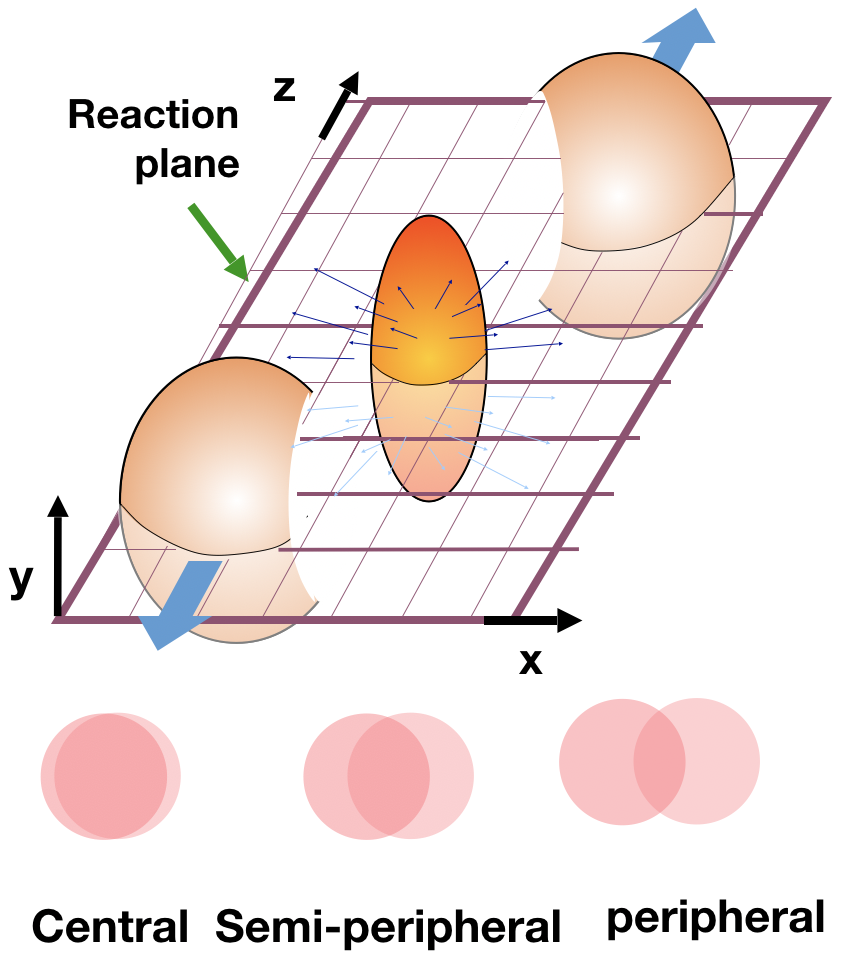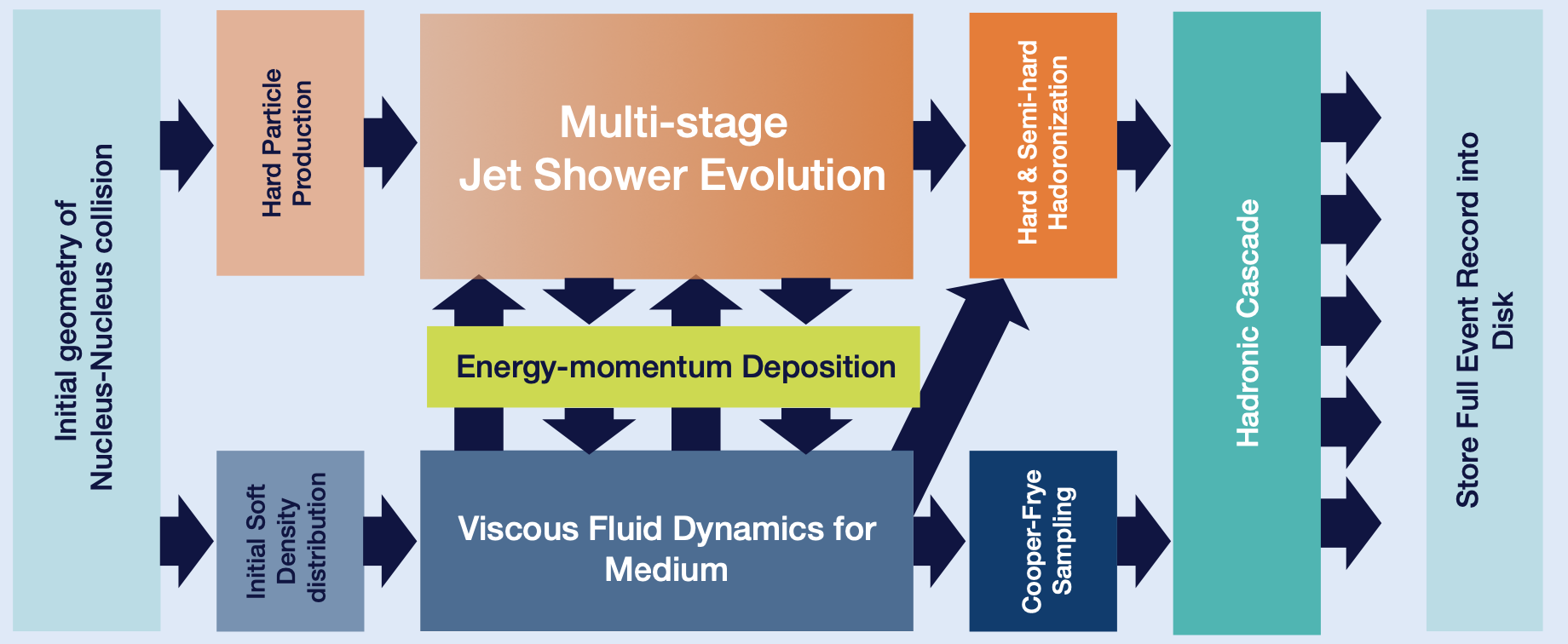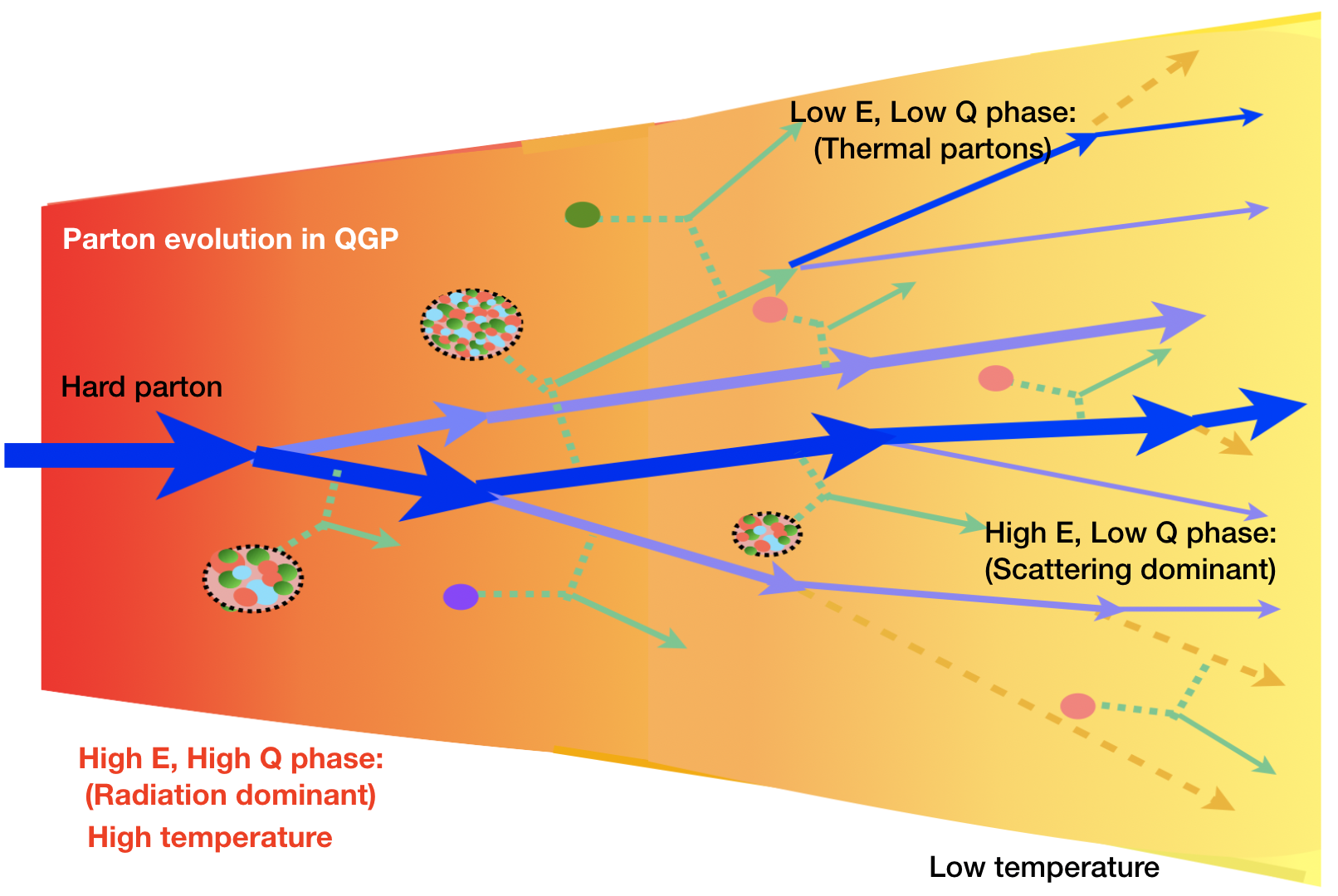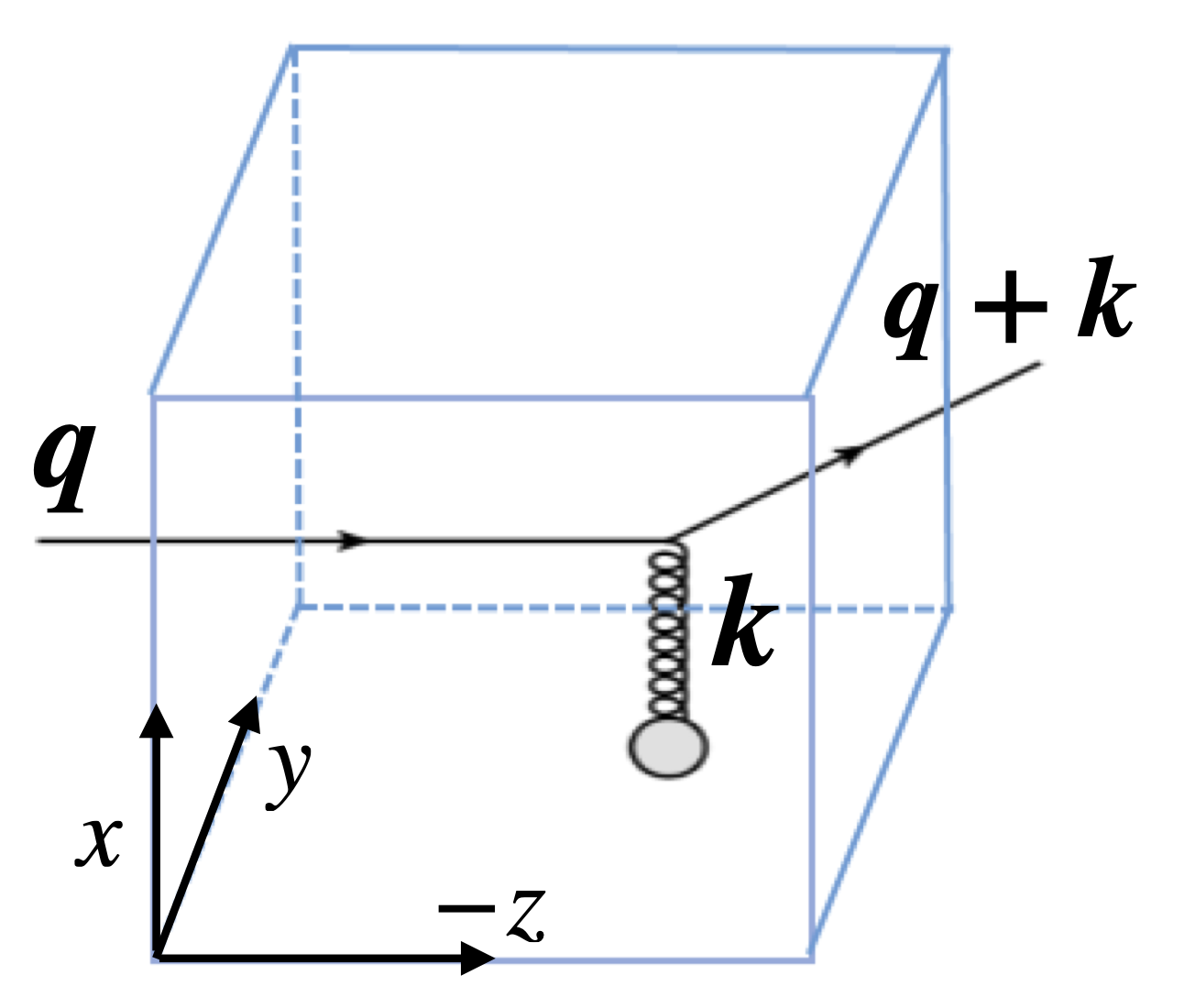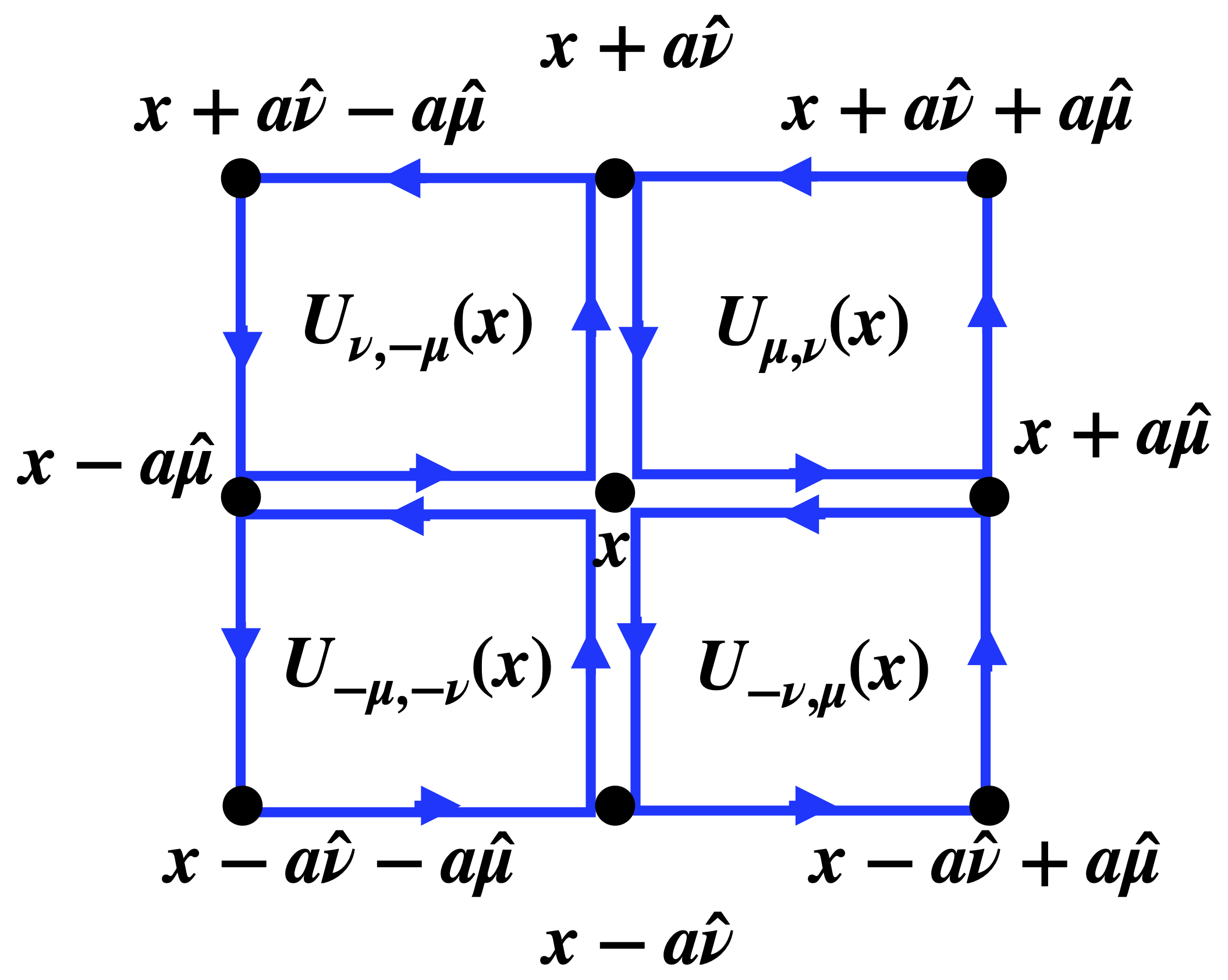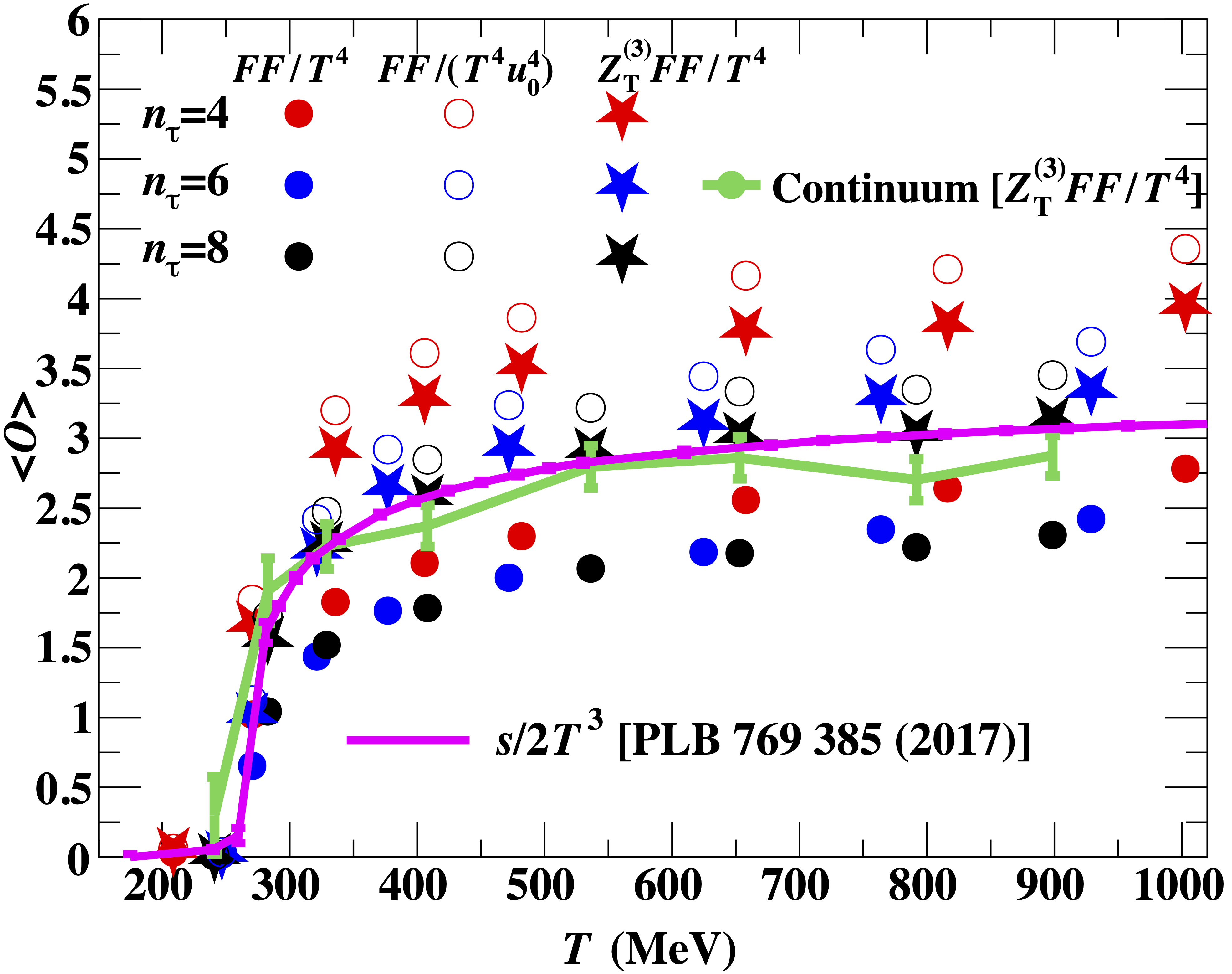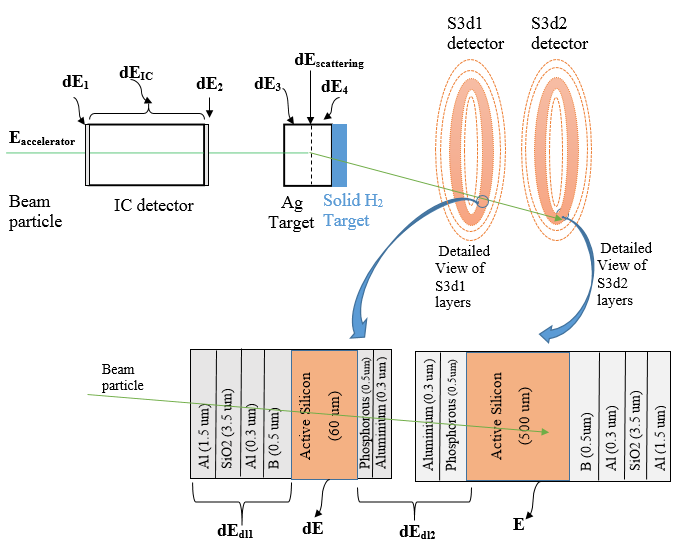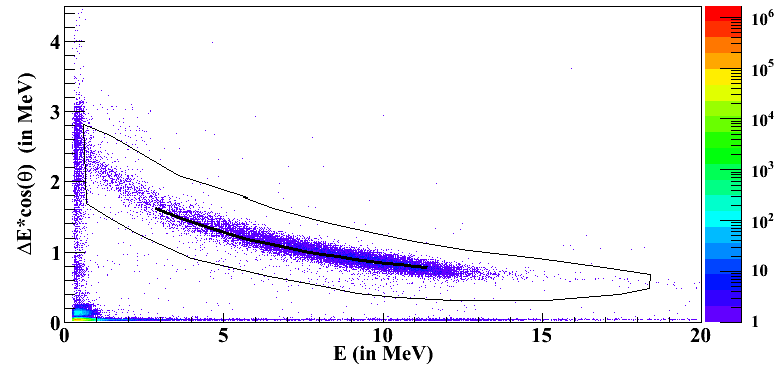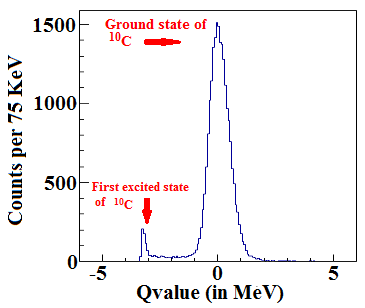About
Welcome to the homepage of Amit Kumar. Currently, I am a post-doctoral research fellow
in the department of physics at University of Regina. My major research interest lies
in understanding the properties of strongly interacting nuclear matter such as quark-gluon plasma (QGP),
a deconfined phase of quarks and gluons.
I use high-energy partons (quarks and gluons) produced in the initial state hard
scattering as a probe to learn about the properties of the QGP formed in relativistic
heavy-ion collisions. The QGP is routinely produced in experimental facilities such as
the Relativistic Heavy Ion Collider (RHIC) in Brookhaven National Laboratory (BNL), NewYork
and the Large Hadron Collider (LHC) in CERN, Geneva. To construct the physics models for
parton energy loss, we use guidance from perturbative quantum chromodynamics (QCD) and
non-perturbative lattice QCD. To constrain the model parameters and test various hypotheses,
we apply Monte-Carlo techniques and carry out model-to-experimental-data comparisons by
generating events at High-performance computing (HPC) facilities such as Compute Canada,
Wayne State Grid, and USA XSEDE clusters. I am also involved in carrying out research in
collaboration with JETSCAPE, an interdisciplinary team of physicists, computer scientists,
and statisticians, whose primary goal is to develop a physics community software that
simulates all aspects of heavy-ion collisions.
Collider Physics & Statistical Modeling.
Experienced researcher with 7+ years of hands-on experience in applying numerical and statistical methods to understand the fundamental rules governing nature. My short educational bio is below:
- Current Position: Research Fellow, University of Regina (2024-Current)
- Collaboration: https://github.com/JETSCAPE
- Ph.D. : Wayne State University
Michigan, USA (2015-2020) - B.Tech. : IIT Guwahati
Guwahati, India (2009-2013) - Git-Hub: https://github.com/amitkr2410
- Former Position: Research Fellow, McGill University (2021-2023)
- Email: amit.kumar@uregina.ca
- M.Sc. : Saint Mary's University
Halifax, Canada (2013-2015) - ORCID-ID: https://orcid.org/0000-0003-1099-6422
Summary of publications and presentations
- 19 scientific papers with 400+ citations—includes 8 conference proceedings
- 12 conference talks:
- Competitively selected talks: Quark Matter 2022, Hard-Probes 2020, Quark Matter 2019, Lattice 2018, Hard-Probes 2018, Quark Matter 2017 and WNPPC 2015
- Invited talks: sPHENIX predictions workshop 2022, EIC users group meeting 2018, and BNL Nuclear Theory Seminar 2019
The research articles are available on the ORCID , Google Scholar and inSpire-HEP database.
Skills
- Physics packages: JETSCAPE, Fast-Jet, PYTHIA8, MILC lattice code
- Language: Python, C/C++, Bash/Shell scripting
- Packages: Numpy, matplotlib, pandas, sci-kit learn
- Git-hub version control, docker, Matlab, ROOT-CERN
Research Work
My primary focus has been to study the parton (quark/gluon) energy loss in QGP using tools from pQCD, lattice QCD and JETSCAPE Monte-Carlo framework. The codes are developed in C++ or python languages.
- JETSCAPE research
JETSCAPE is a state-of-the-art simulation framework with capabilities to accommodate physics of each stage of the high-energy heavy-ion collisions. It has been developed to study the properties of quark-gluon plasma (QGP), explore behavior of elementary particles in nuclear medium and discover new physics.
The figure on left panel represents production of a almond-shaped fireball, a deconfined state of quarks and gluons (quark-gluon plasma) hypothesized to have existed in the early universe. Such collisions are routinely performed in accelerator facilities LHC in Geneva and RHIC in NewYork to produce QGP.
The figure in top-center is a schematic block-diagram of JETSCAPE physics software. Each block represents a physics module.
The figure in bottom-center panel illustrates three different phases of parton energy loss in expanding quark-gluon plasma.
We performed full model calculation for proton-proton collision and nucleus-nucleus collisions and tested model hypothesis against the experimental data. The study demonstrated that there is a significant space-time and energy loss dependence during early stage (high-virtuality) of the parton energy loss. The space-time dependence during early stage played crucial role in simultaneous description of key observables at multiple collision energies.
- Lattice determination of transport coefficients for parton energy loss
In this project, we computed transport coefficient q-hat which characterizes the transverse momementum broadening of the parton propagating through hot-dense plasma. It is challenging to determine the temperature dependence of this quantity due to non-perturbative nature of strong-coupling constant. The quantity controls the rate of medium-induced radiative energy loss and hence, plays central role in understanding the modification of the energetic parton traversing the evolving QGP.
We considered a leading-order process where the energetic quark interact through plasma (box) by exchanging a single gluon and exit the box (Figure left-panel). The plasma in the box was considered to be gluonic and was modeled using pure SU(3) lattice gauge theory. The gluonic fields were represented via 3x3 SU(3) matrix computed using Monte-Carlo sampling of action density dependent probability distribution.
The operators were computed on 4-dimensional lattice of sizes Nt*Ns^3 = 4x16^3, 6x24^3 and 8x32^3 for temperature range 200 MeV < T < 1000 MeV. We have also extended the calculation to the case of QCD plasma where we used MILC lattice QCD code to evaluate operators.
- Exploring 3-body force using rare-isotope nuclei at TRIUMF laboratory
This project was carried out during my M.Sc. (2013-2015) at Saint Mary's University Halifax, Canada. In this project, we made first attempt to measure the elastic scattering cross section for scattering between exotic unstable nucleus 10C and proton. The goal of the measurement was to see if three-nucleon (3-body) forces plays an important role in nuclear reaction and test the validity of ab-initio nuclear models.
We successfully performed the elastic scattering of the unstable nucleus 10C on
a proton target using the ISAC Charged Particle Reaction Spectroscopy Station
(IRIS) facility stationed at TRIUMF, Canada. The facility utilizes a novel thin
windowless solid H2 target (~4 Kelvin) which made the reaction study possible with a beam intensity of ∼ 2.5×10 3 pps. The angular distribution measurement was based on the
detection of the protons with the thin Silicon (Si) and Thallium doped Cesium Iodide(CsI:Tl) detectors. We compared the measured cross section with the predictions made by ab initio no core shell model
with continuum (NCSMC) based on NN (N3LO) and 3N (N2LO) forces. The results with 3N forces showed significant improvement to the calculation.
Git-Hub projects
JETSCAPE
JETSCAPE is a modular, task-based software to simulate all aspects of heavy-ion collisions. Language:C++.
HPC_data_analysis
Here, we develop the code to launch jobs at HPC, perform analysis of heavy-ion collision data. Glauber Monte-Carlo simulation. LatticeQCD simulations. Language: python, C/C++, Bash-Shell.
SummerSchool2022
The code used during JETSCAPE summer school 2022. Language: python, Jupyter Notebook
MILC
This is Lattice QCD code from MILC collaboration. Here, we develop the code to compute the expectation value of the quantities such as Plaquette, Polyakov Loop, Field-Strength Field-Strength correlator for full QCD. Language: C
MachineLearning
Applications of Machine learning. The projects include explorations of classical machine learning and deep learning algorithms.
Language: python, Jupyter Notebook, Numpy, matplotlib, pandas, tensor flow, keras, sci-kit learn, sea-born.

